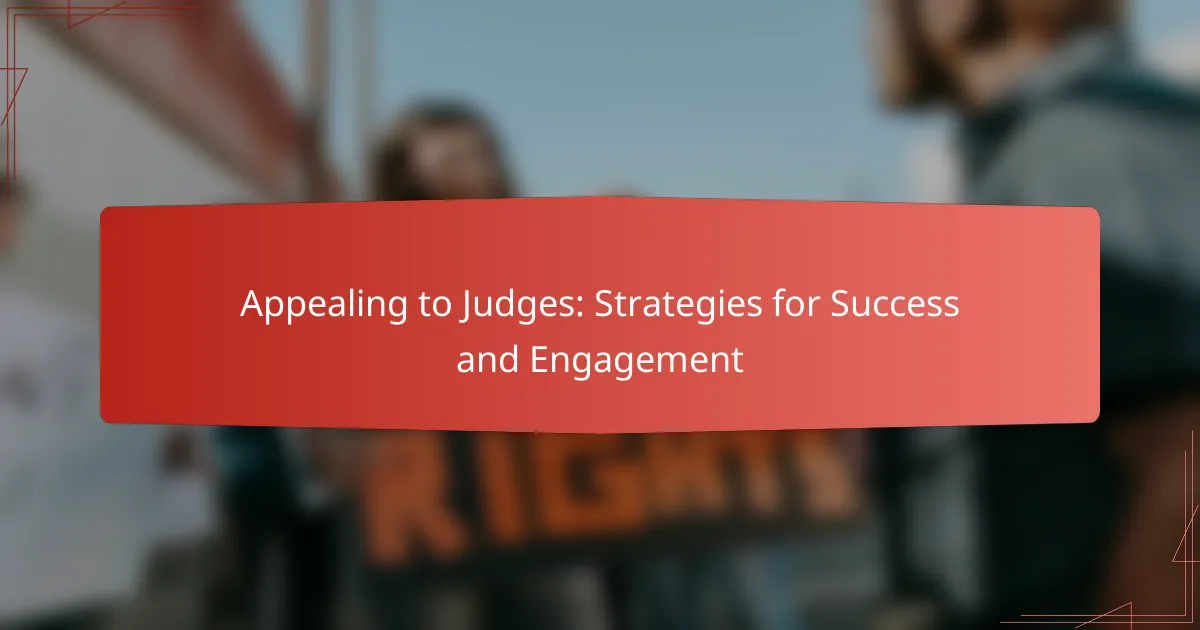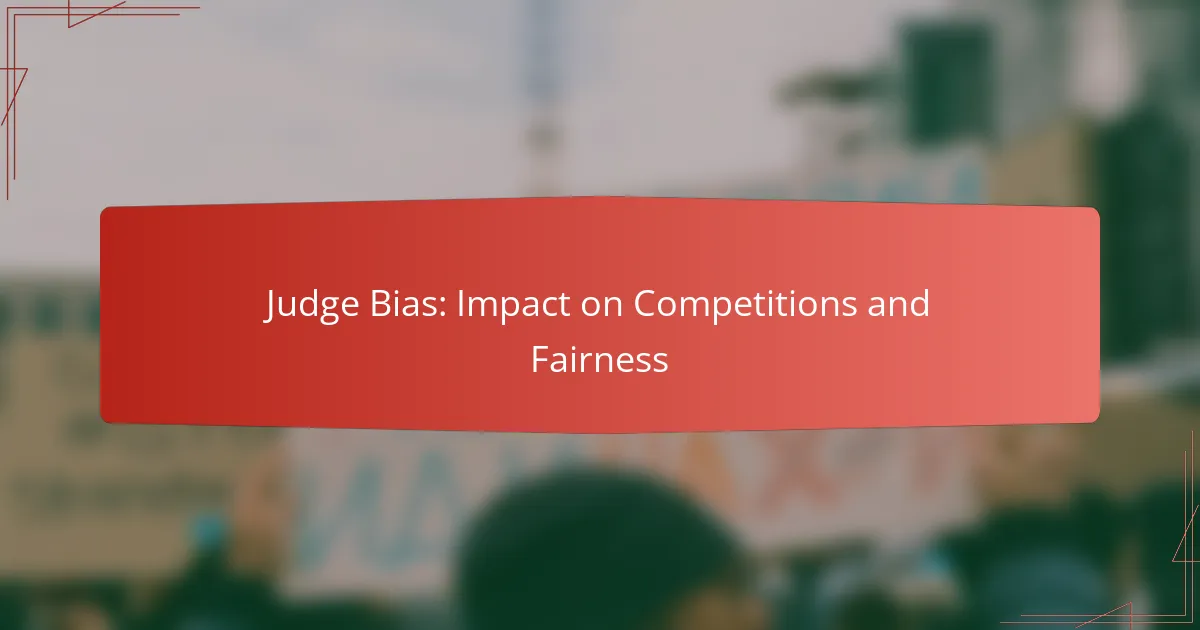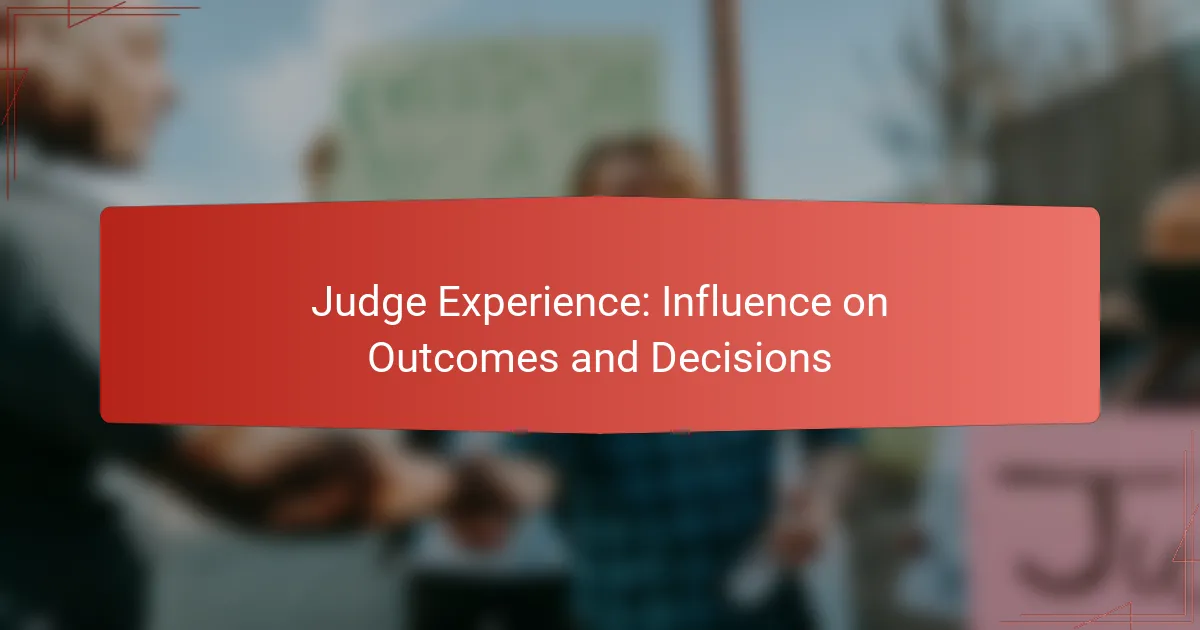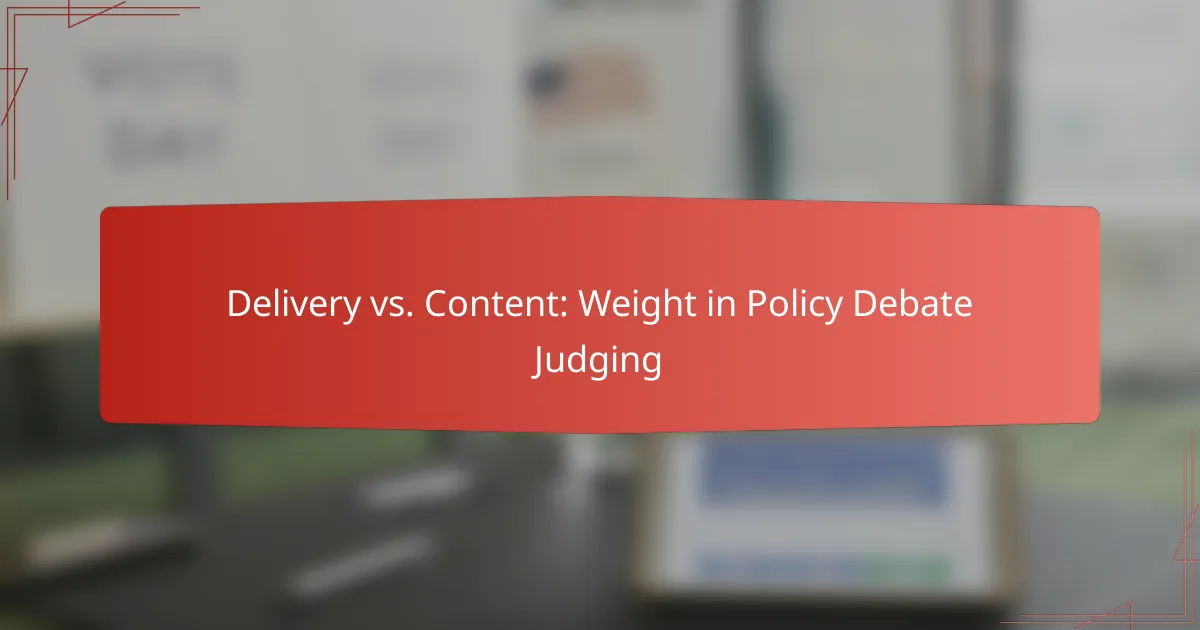Appealing to judges requires a strategic approach that combines clear communication, compelling storytelling, and effective use of visual aids. By preparing thoroughly and maintaining a respectful demeanor, attorneys can engage judges more effectively and present their arguments in a manner that resonates with the court. These techniques not only enhance credibility but also foster a meaningful connection with the judges, ultimately influencing the outcome of the case.
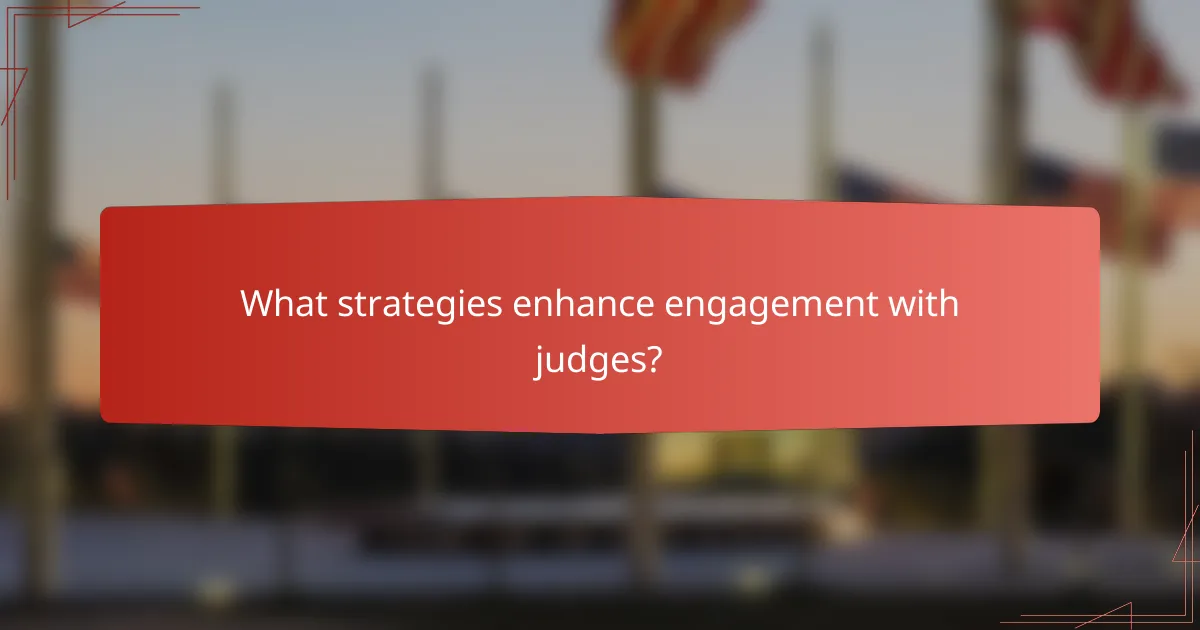
What strategies enhance engagement with judges?
Engaging judges effectively requires a combination of clear communication, storytelling, visual aids, and interactive elements. These strategies help convey your message more persuasively and foster a connection with the judges.
Effective communication techniques
Clear and concise communication is essential when addressing judges. Use straightforward language and avoid legal jargon unless necessary. Aim for a tone that is respectful yet assertive, ensuring that your key points are easily understood.
Practice active listening during interactions. This not only shows respect but also allows you to respond thoughtfully to judges’ questions or concerns, enhancing the overall dialogue.
Building rapport through storytelling
Storytelling can create a personal connection with judges, making your arguments more relatable. Share relevant anecdotes that illustrate your points, focusing on emotional or impactful narratives that resonate with the judges’ experiences.
Keep stories concise and relevant to the case at hand. A well-placed story can highlight the human element of your argument, making it more memorable and persuasive.
Utilizing visual aids
Visual aids, such as charts, graphs, and slides, can enhance understanding and retention of information. Use these tools to simplify complex data or highlight key points, ensuring they are clear and professional.
Limit the amount of text on visual aids to avoid overwhelming the judges. Aim for a balance between visuals and verbal explanations to maintain engagement without distraction.
Incorporating interactive elements
Interactive elements, such as Q&A sessions or audience participation, can foster a more dynamic environment. Encourage judges to ask questions or share their thoughts, which can lead to a more engaging and productive discussion.
Be prepared to adapt your presentation based on the judges’ responses. Flexibility can demonstrate your confidence and willingness to engage in meaningful dialogue, making a positive impression.
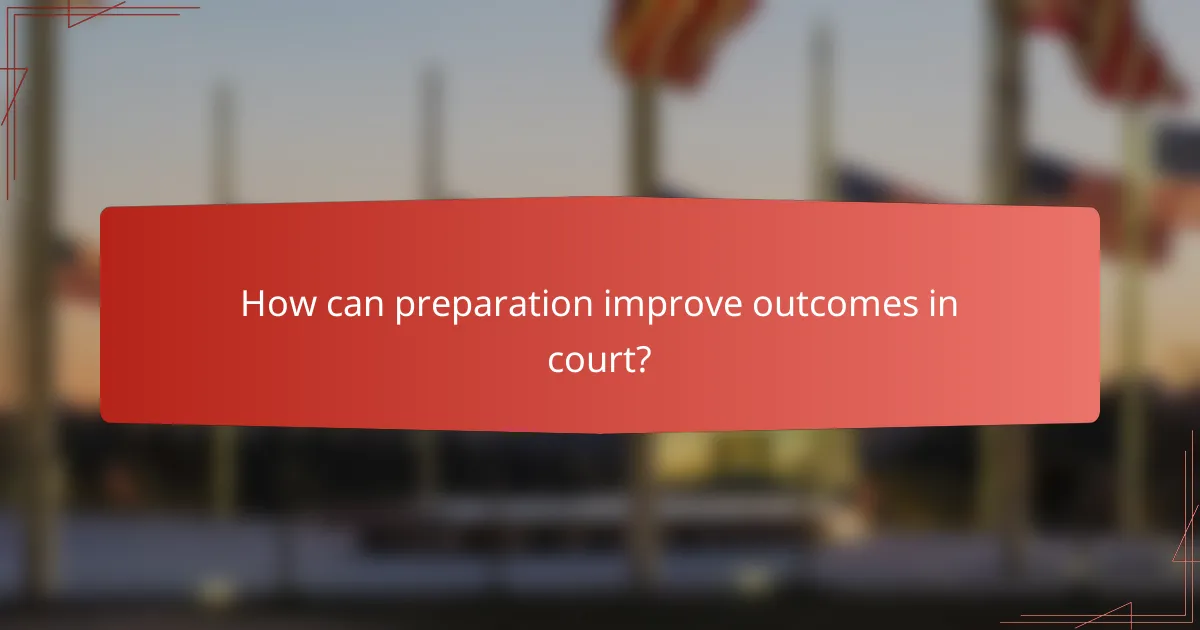
How can preparation improve outcomes in court?
Preparation significantly enhances outcomes in court by equipping attorneys with the knowledge and skills needed to effectively present their case. A well-prepared attorney can anticipate challenges, engage the judge, and present compelling arguments that resonate with the court’s expectations.
Researching judge’s preferences
Understanding a judge’s preferences is crucial for tailoring your approach in court. Judges may have specific styles, such as favoring concise arguments or detailed evidence presentations. Research can include reviewing past rulings, observing courtroom behavior, or consulting with colleagues familiar with the judge.
Consider creating a profile for the judge that includes their typical rulings, preferred courtroom decorum, and any notable comments made during previous cases. This can guide your strategy and help you align your presentation style with their expectations.
Mock trials for practice
Conducting mock trials is an effective way to prepare for the actual court proceedings. These simulations allow attorneys to practice their arguments, receive feedback, and refine their delivery in a low-stakes environment. Engaging colleagues or mentors to act as judges can provide valuable insights.
Focus on key aspects such as timing, clarity, and the ability to respond to unexpected questions. Mock trials can also help identify weaknesses in your case or presentation, allowing you to address them before the real trial.
Organizing case materials
Well-organized case materials are essential for a smooth presentation in court. This includes creating a comprehensive binder or digital folder that contains all relevant documents, evidence, and notes. Organize materials logically, such as by theme or chronology, to facilitate quick access during the trial.
Consider using tabs or color coding to differentiate between types of documents, such as witness statements, exhibits, and legal precedents. This organization not only aids in efficiency but also demonstrates professionalism to the judge and jury.
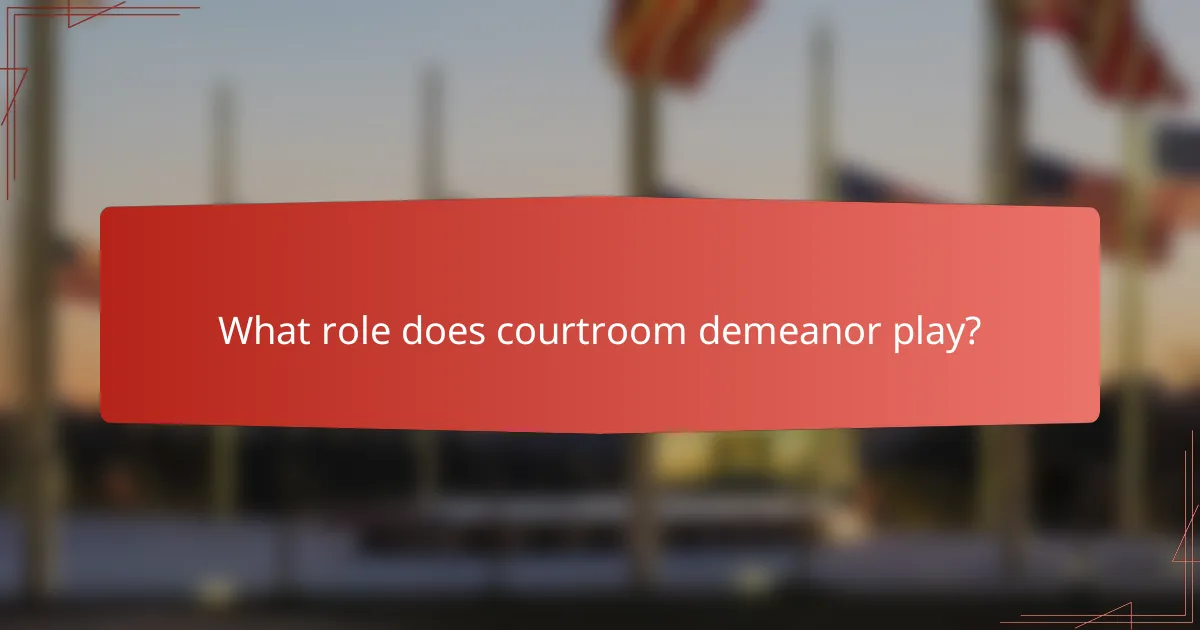
What role does courtroom demeanor play?
Courtroom demeanor significantly influences a judge’s perception of a case. A composed and respectful attitude can enhance credibility, while negative behavior may detract from arguments and overall effectiveness.
Maintaining professionalism
Professionalism in the courtroom is crucial for establishing respect and authority. This includes dressing appropriately, addressing the judge and other parties with courtesy, and adhering to courtroom protocols. Simple actions, like standing when speaking and avoiding interruptions, can reinforce a professional image.
Judges expect attorneys to conduct themselves with integrity. Avoiding casual language and maintaining a serious tone during proceedings can further demonstrate commitment to the case. Remember, first impressions matter, and professionalism sets the tone for the entire interaction.
Understanding body language
Body language plays a vital role in courtroom demeanor, as non-verbal cues can convey confidence or uncertainty. Maintaining eye contact with the judge and other parties shows engagement and respect. Additionally, open body posture can signal honesty and readiness to communicate.
Be mindful of gestures; excessive movements can be distracting, while controlled gestures can emphasize key points. Practicing in front of a mirror or with colleagues can help refine body language to ensure it aligns with the message being conveyed.
Managing stress and anxiety
Managing stress and anxiety is essential for effective courtroom performance. Techniques such as deep breathing, visualization, and positive affirmations can help maintain composure. Preparing thoroughly for each case can also reduce anxiety levels, as familiarity with the material breeds confidence.
Consider engaging in mock trials to simulate the courtroom environment. This practice can help identify personal stress triggers and develop coping strategies. Remember, staying calm under pressure not only benefits the attorney but also positively impacts the judge’s perception of the case.
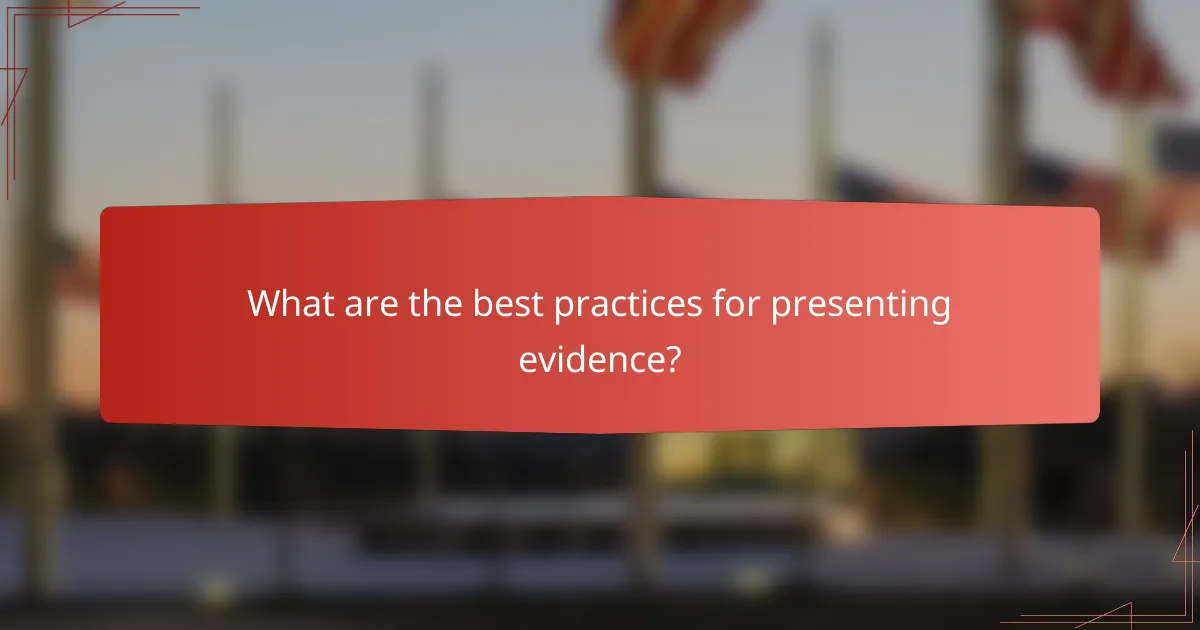
What are the best practices for presenting evidence?
Effective evidence presentation is crucial in legal settings, as it can significantly influence a judge’s decision. Best practices include clarity, organization, and the strategic use of technology to enhance understanding.
Clear and concise presentation
A clear and concise presentation of evidence helps judges quickly grasp the key points. Focus on organizing evidence logically, using headings and bullet points to break down complex information. Aim for brevity; each piece of evidence should be relevant and directly support your argument.
When presenting, avoid jargon and overly technical language unless necessary. Instead, use straightforward terms that convey your message effectively. This approach ensures that the judge remains engaged and can follow your argument without confusion.
Using technology effectively
Leveraging technology can enhance the presentation of evidence and make it more accessible. Tools like presentation software, digital exhibits, and video recordings can help illustrate your points clearly. Ensure that any technology used is reliable and that you are familiar with its operation to avoid technical difficulties during the presentation.
Consider using visual aids such as charts or graphs to summarize data. These can make complex information more digestible and highlight trends or key findings that support your case. However, ensure that these visuals are simple and directly relevant to your argument.
Highlighting key points
Emphasizing key points during your presentation can help the judge remember critical information. Use techniques like repetition, summarization, and vocal emphasis to draw attention to the most important aspects of your evidence. This can reinforce your argument and ensure it resonates with the judge.
Additionally, consider providing a handout or summary document that outlines your main points and evidence. This can serve as a useful reference for the judge during deliberation. Make sure this document is well-organized and clearly formatted to facilitate easy navigation.

How can feedback from judges be utilized?
Feedback from judges can be a valuable tool for improving performance and outcomes in future engagements. By carefully analyzing their comments and suggestions, individuals can identify strengths and weaknesses, allowing for targeted improvements.
Analyzing past rulings
Analyzing past rulings involves reviewing previous decisions made by judges to understand their reasoning and preferences. This process can reveal patterns in how judges interpret laws and assess arguments, which can be crucial for tailoring future presentations.
Consider creating a summary of key rulings relevant to your case. Focus on the rationale behind the decisions, the legal principles applied, and any dissenting opinions. This can help in predicting how a judge may respond to similar arguments in your case.
Additionally, keep track of judges’ feedback on specific aspects of cases, such as evidence presentation or legal arguments. This can guide you in refining your approach, ensuring that you align with the judges’ expectations and preferences in future engagements.
